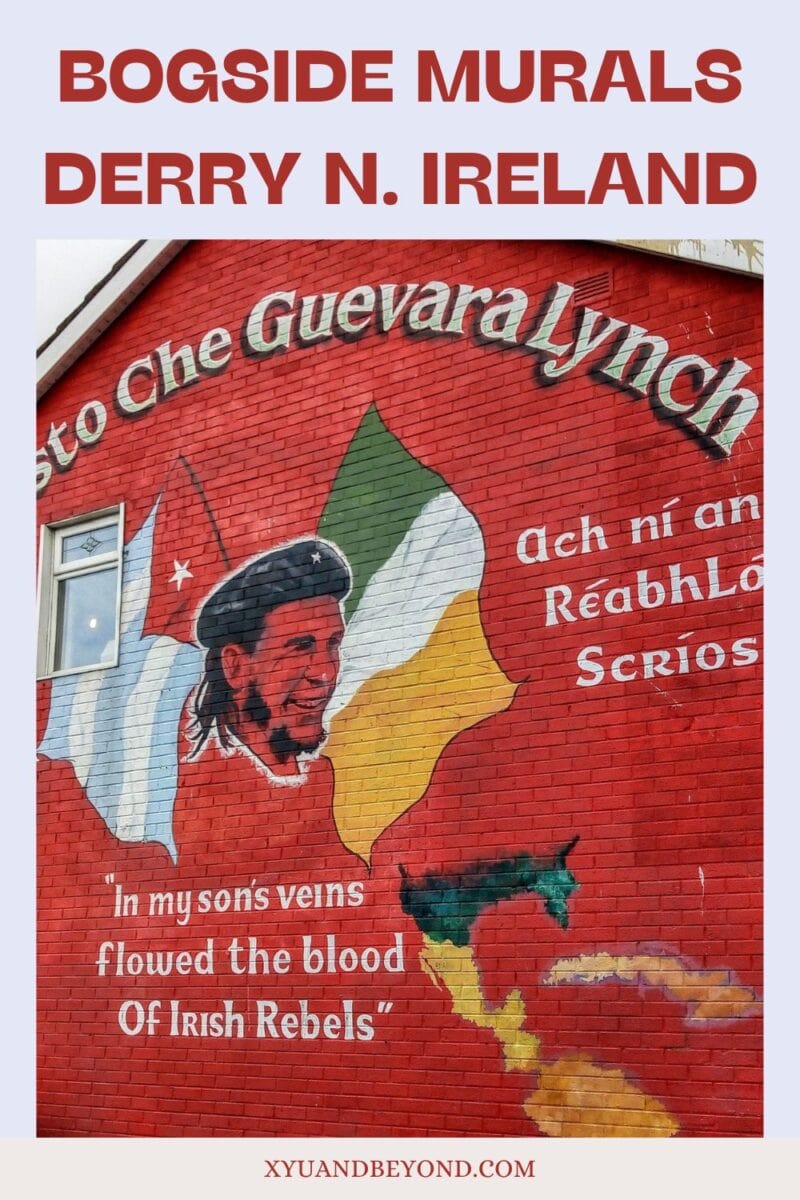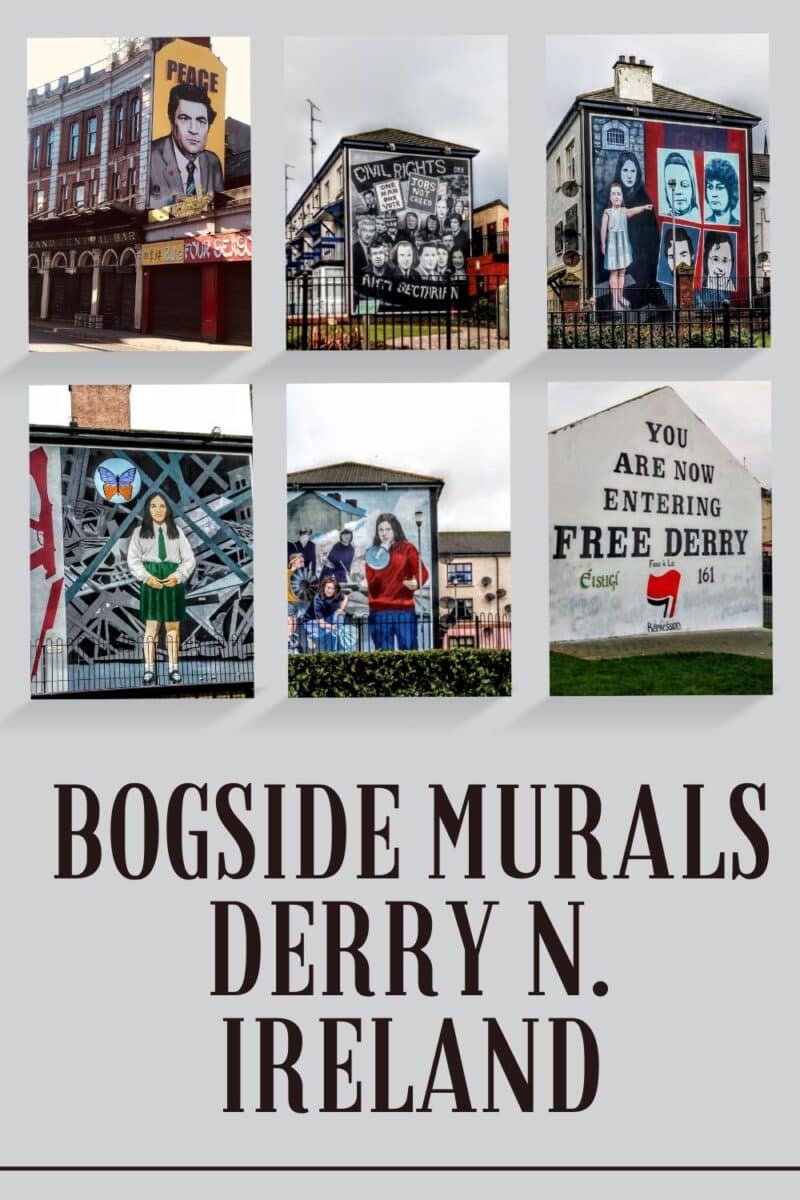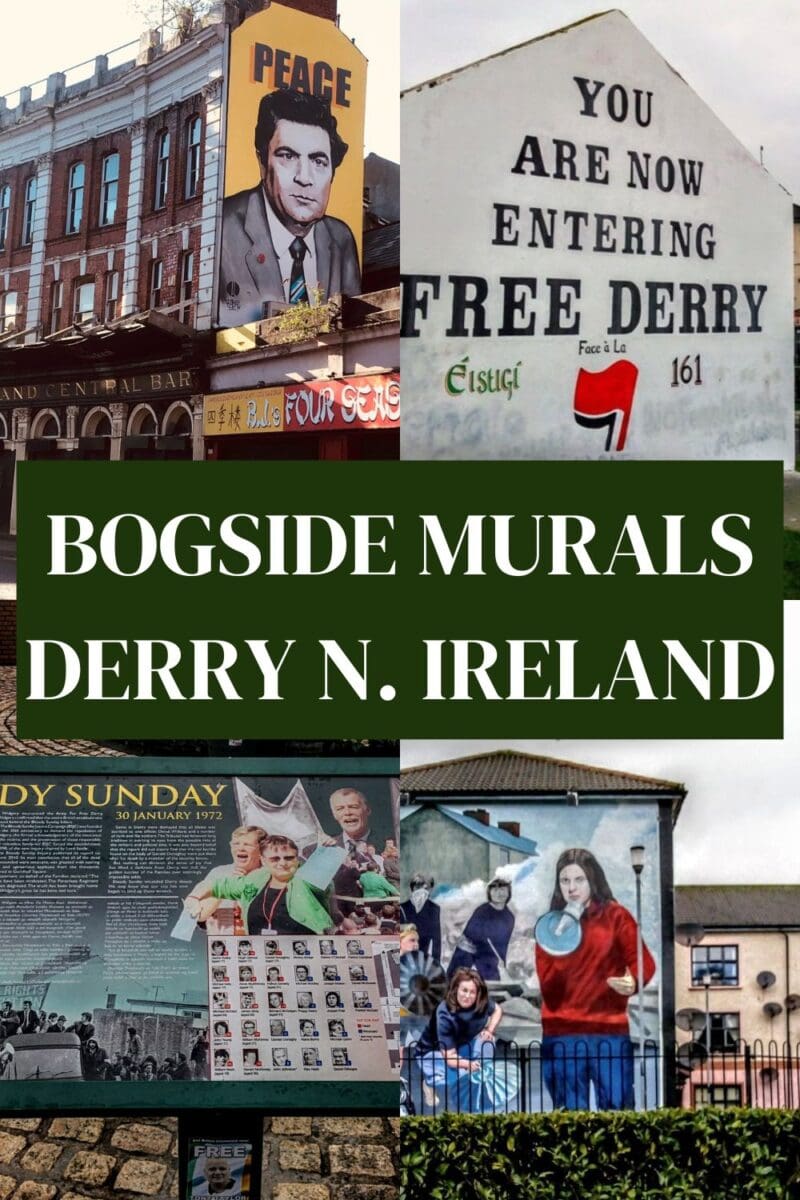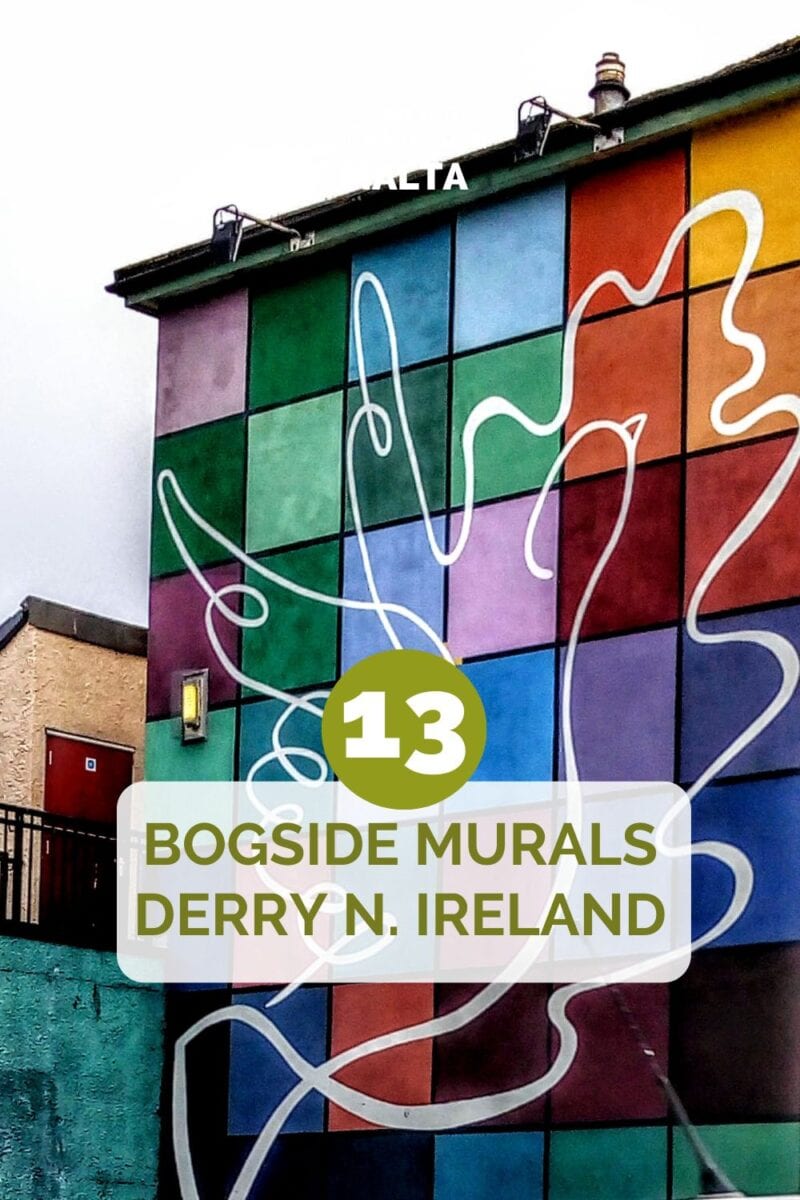Derry Murals: The People’s Gallery Bogside Derry
Derry is one of my favourite cities in Northern Ireland and I’ve hesitated to write about the place since you can’t visit Derry and not go and see Bogside and the Derry murals. Northern Ireland has a very complex and turbulent history and the murals resonate deeply with that conflict.

I was born in Northern Ireland and my family left for England in 1967 as there was no work to be had and opportunities in England made providing for a family easier. My childhood memories of discussions between the older family members highlighted The Troubles over the next few years and what different family members went through during those times.
We were a blended family of both Protestants and Catholics, my grandmother had adopted two children whose parents were Catholics and were killed during WWII and they were raised with her other five kids. According to the stories they told prior to the mid-’60s there were obviously issues such as the discrimination against Catholics which needed to be addressed but there was no violence at that time.

It wasn’t until I made a visit back to family and friends in the early 80s that I began to learn more about The Troubles and the conflict. It was a friend in Donegal who filled me in on the reality of those years. I am firmly of the belief that Ireland should be united and I wanted to be clear on that point since it informs my view of the history of The Troubles.
I visited Derry often as living in Donegal Derry was a mere 45-minute drive from Donegal Town. I think it is important to clarify the name of the city.
Derry or Londonderry?
Derry is the second biggest city in Northern Ireland and is located in County Derry which borders Donegal and has close ties to the County. Its name Derry comes from the Irish word Daire which means oak forest. Derry is the only remaining intact walled city in Ireland. The old city which is walled is on the west bank of the Foyle River and is spanned by two bridges for vehicles and the pedestrian bridge named the Peace Bridge.

I should say a word or two here about the Derry Londonderry naming issue. Nationalists favour Derry and Unionists use Londonderry. The name of the city didn’t use to be contentious but in the ’60s at the start of the Troubles, it was politicized by the Republicans to drive home the fact that Ireland should be united and not under the control of London.
The argument to change the official name from Londonderry to Derry has gone back and forth for years. Hopefully with a much younger voting group coming up and the Peace Accord going strong eventually the name will become in law Derry which is its original Irish name.
Timeline of The Troubles roughly from 1968 to the late ’90s
Bogside – a Catholic neighbourhood in Derry
Civil Rights March – On October 5, 1968, a protest march was planned along Duke Street in Derry. The nationalist activists wanted to draw attention to discriminatory housing policies that resulted in de facto segregation along sectarian and religious lines.

The march was banned by the Northern Ireland government, but protestors defied the order and gathered on October 5 for the march. The marcher’s advancement was barricaded by the Royal Ulster Constabulary (RUC) who charged the protestors and beat them under the watchful eyes of TV cameras.
Burntollet Bridge 1969
On New Year’s Day 1969, the activists decided to march taking their inspiration from Martin Luther King’s March on Selma. They organized a march from Belfast to Derry.
The RUC provided a police escort for the protestors until they reached Burntollet Bridge outside of Derry. At that point, the police took out their batons and held up their shields because they knew an attack from Loyalists was coming.
Battle of the Bogside
Took place August 12-14th, 1969 when the British Army forces were deployed to break up a protest that was taking place in Derry against the Apprentice Boys parade which ran directly past the Bogside.
The Bogsiders saw the Apprentice Boys parade as a direct provocation and prepared for a violent confrontation, barricading streets and readying Molotov cocktails. When the inevitable clash came the RUC officers who rushed in were met with violent resistance pelted with rocks and Molotov cocktails.
When police attacked the Bogside community in January 1969 the words “You Are Now Entering Free Derry” appeared on a gable wall of a house. The gable wall still remains today with the slogan changed as the time’s change.

The “Battle of the Bogside,” went on for three days in Derry but the worst damage came when loyalist mobs In Belfast swarmed Catholic neighbourhoods and burned 1500 homes down.
On August 14 the prime minister of Northern Ireland requested British troops be sent in to help calm things down. Of course this “calming” didn’t happen and the army remained in Northern Ireland for many years to come.
Bloody Sunday
The British army was welcomed by the nationalists who saw them as their protectors but the army instituted a policy of internment without trial and rounded up hundreds of suspected IRA members. The nationalists organized a march to protest this policy on January 30, 1972, and the army was called in to break up the march.
When the protestors wouldn’t leave the army opened fire with rubber bullets and live rounds. Thirteen protestors were killed and 17 wounded.

Bloody Friday
On Friday 21 July 1972, 19 Irish Republican Army (IRA) bombs exploded across Belfast and 130 people were injured and nine people killed.
Operation Motorman
In the early hours of 31 July 1972, the British army began Operation Motorman in response to Bloody Friday. Their goal was to re-take control of ‘no-go’ areas in Irish nationalist communities and dismantle the barricades.
Operation Motorman involved approx 21,000 troops and would be the biggest military operation in Ireland since the Irish War of Independence.
Hunger Strike
In March 1981, Bobby Sands, the leader of the provisional IRA prisoners, began a hunger strike in the Maze. He died after 66 days. Another 9 hunger strikers died before the campaign was called off in October.
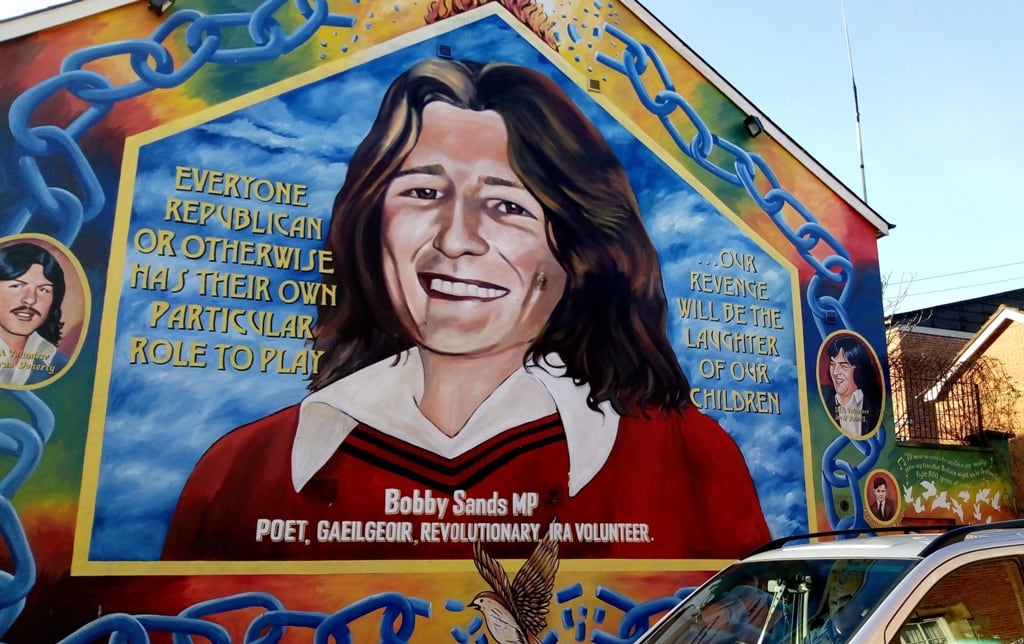
The Bogside Derry Murals
There are currently 13 Bogside murals, known as the ‘Peoples’ Gallery’, and the Bogside artist were brothers William and Tom Kelly and Kevin Hasson. The threesome has been working on the project since 1993. The existing twelve murals are located on walls in Rossville Street in the Bogside area of Derry.
The murals mainly painted on the walls of the houses in Bogside are these days are mainly a street art tourist attraction although as recent events tend to show not all is quiet due to the New IRA violence. Indeed, the Troubles are far from consigned to the past. The killing in April of the journalist Lyra McKee in the nearby Creggan neighbourhood, where she was observing police raids on republican dissidents, was a reminder that Derry hasn’t completely eradicated violence.
I highly recommend a tour of the murals and Bogside to learn from those who went through these times and learn the history of The Trouble from all perspectives.
The Petrol Bomber
Battle of the Bogside, August 1969. A young boy in a gas mask holds a petrol bomb made from a milk bottle. This Derry mural was painted in 1994, the year the peace talks began.
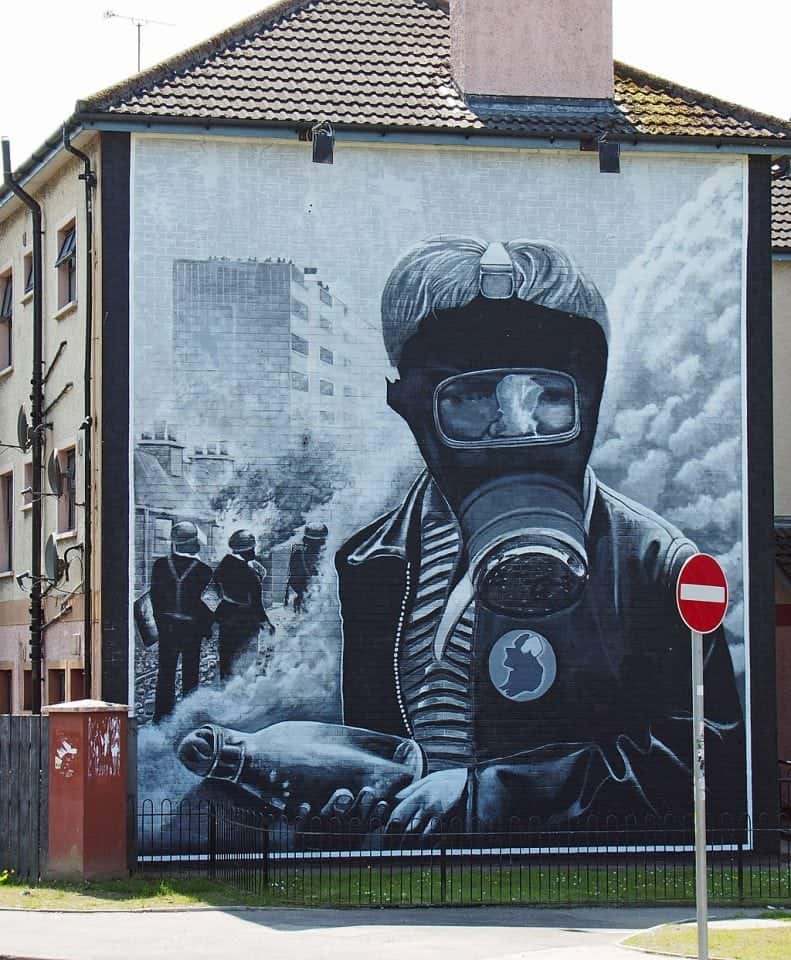
Bernadette
Bernadette McAliskey addressing the crowds in the Bogside. She was later elected to parliament at the age of 21.

Bloody Sunday
A group of men, led by a local priest, carry the body of Jackie Duddy, the first fatality of the day.

Bloody Sunday Commemoration
Portraits of the 14 people killed on Bloody Sunday.
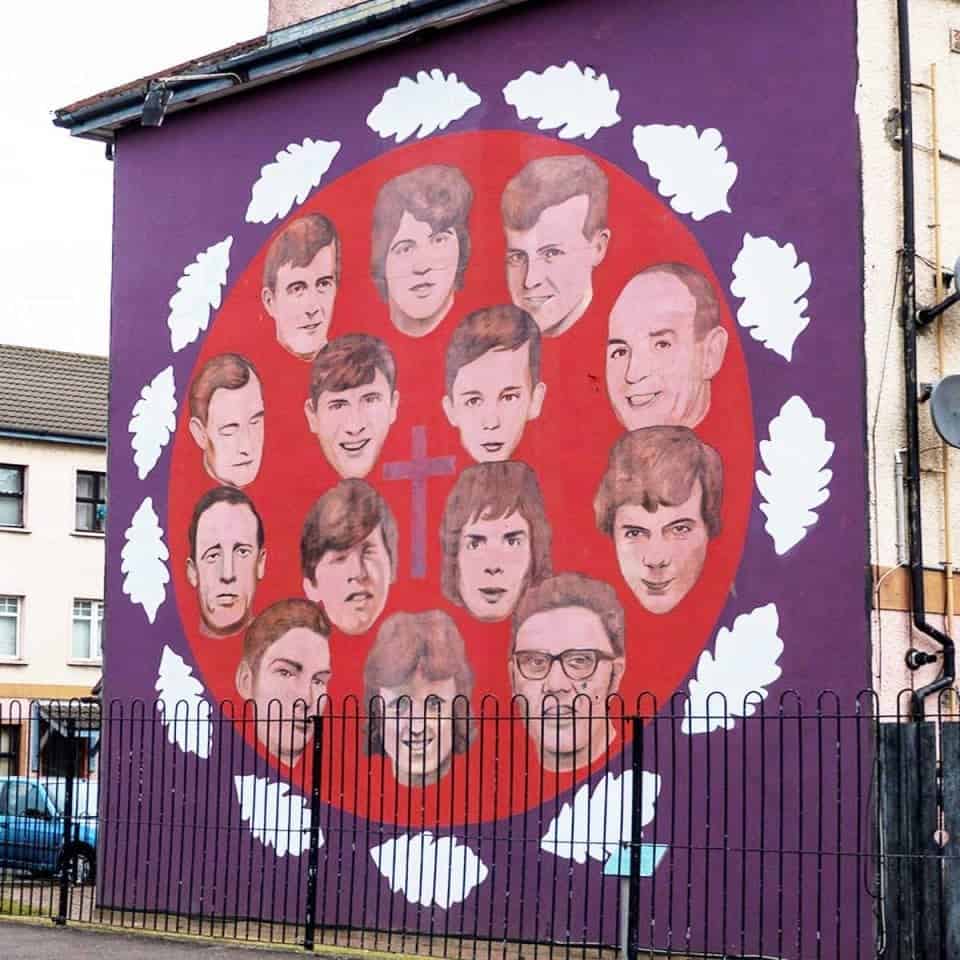
Death of Innocence
14-year-old Annette McGavigan was killed in crossfire near her home in September 1971. She was the 100th victim and represents the 3000 people who died during the Troubles.
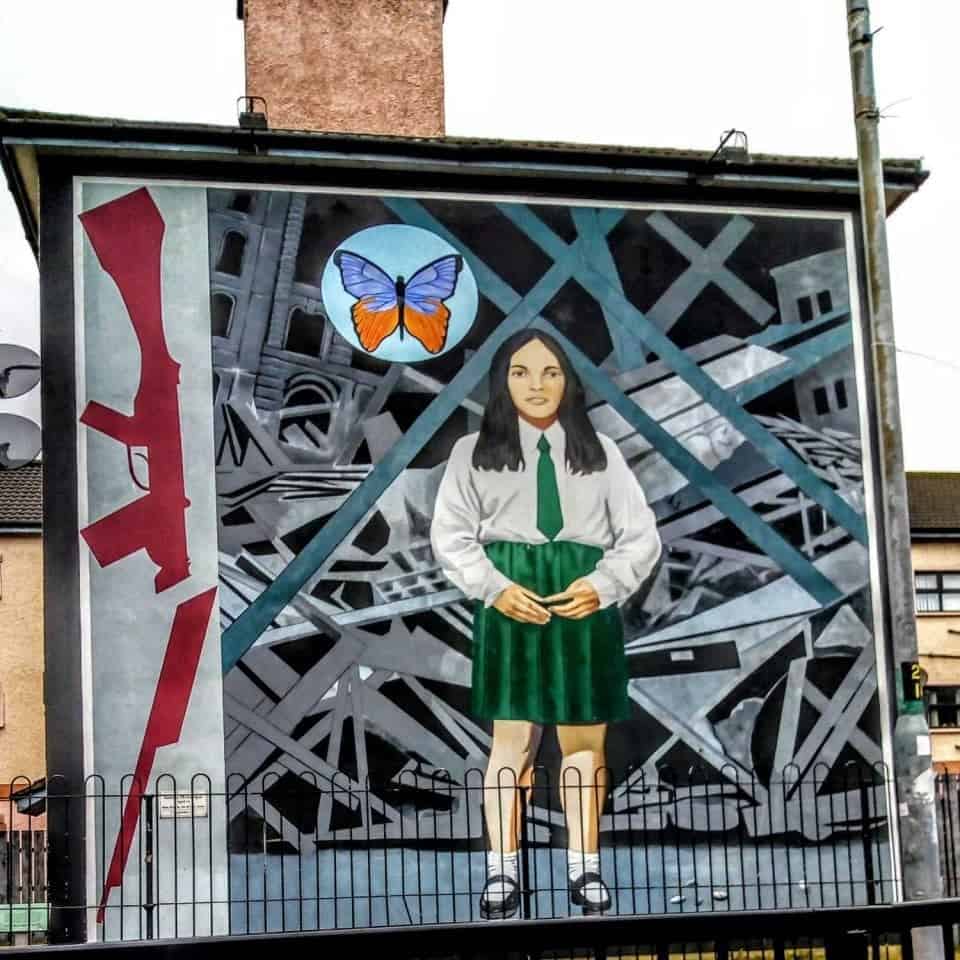
Mothers and sisters
Peggy O Hara was the mother of hunger striker Patsy O Hara and Mickey Devine’s sister also features here. The little girl is pointing towards the Peace Mural on another building.
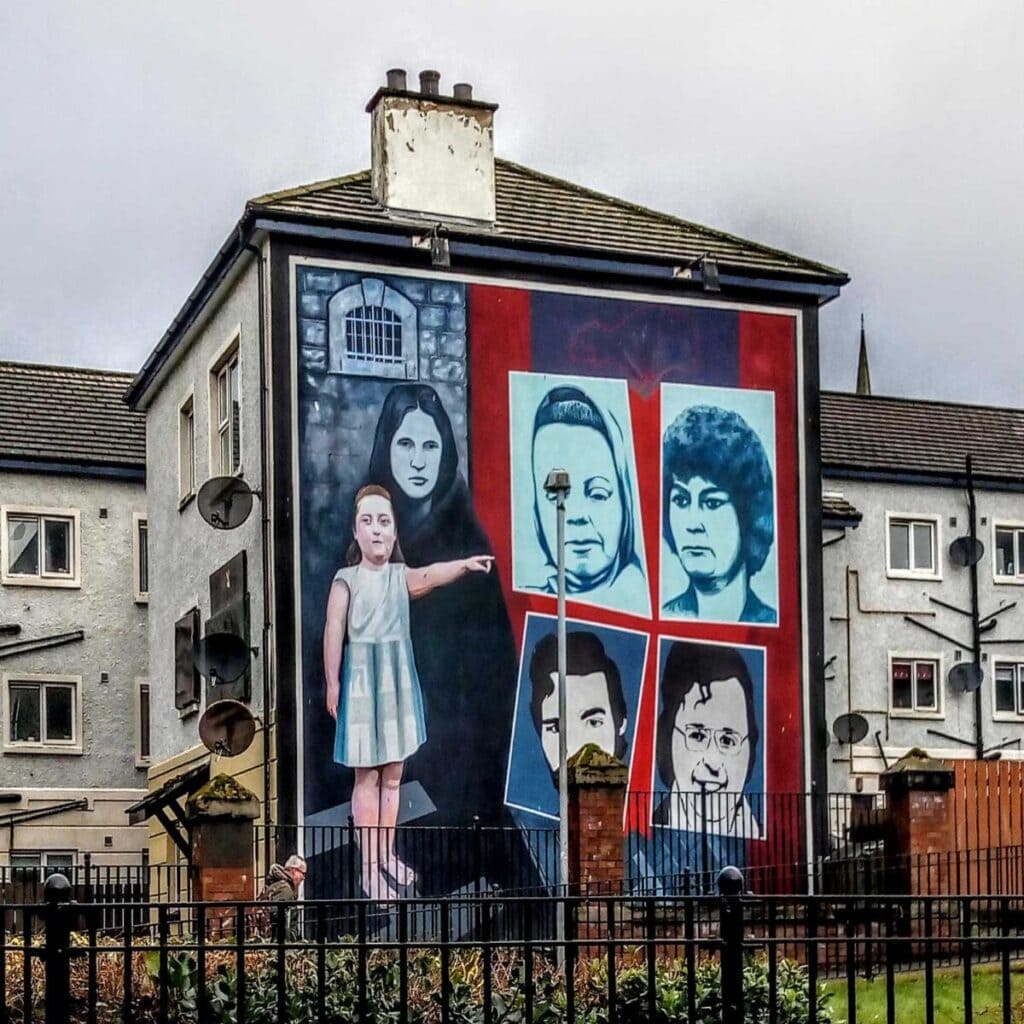
Peace mural
The dove – a symbol of peace – emerges from an oak leaf ( a symbol of Derry). The squares are equal on all sides – representing the equality of all citizens. Overall, it represents a symbol of hope for the future.
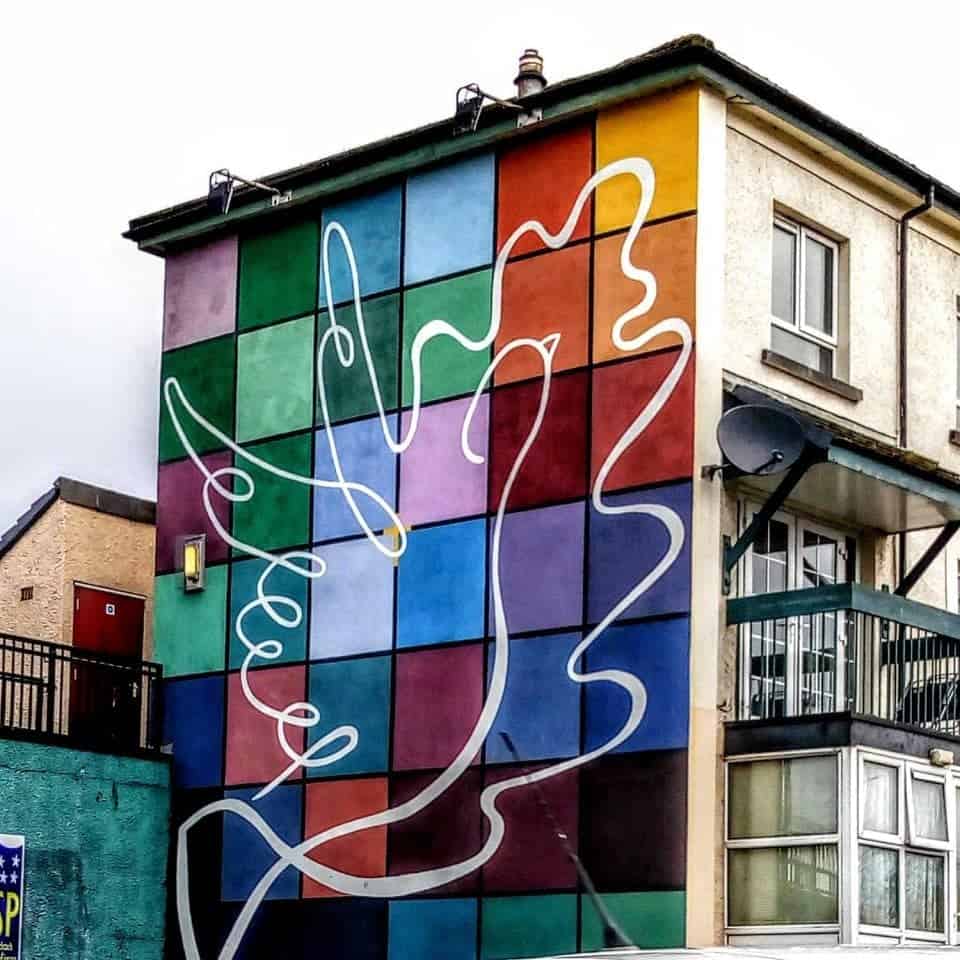
Operation Motorman
Summer 1972 – ‘Free Derry’ ended when the British army moved into the area and removed the barricades.

The Saturday Matinee
There were many riots in the Bogside from 1969 through the early ’70s, often on Saturday afternoons.
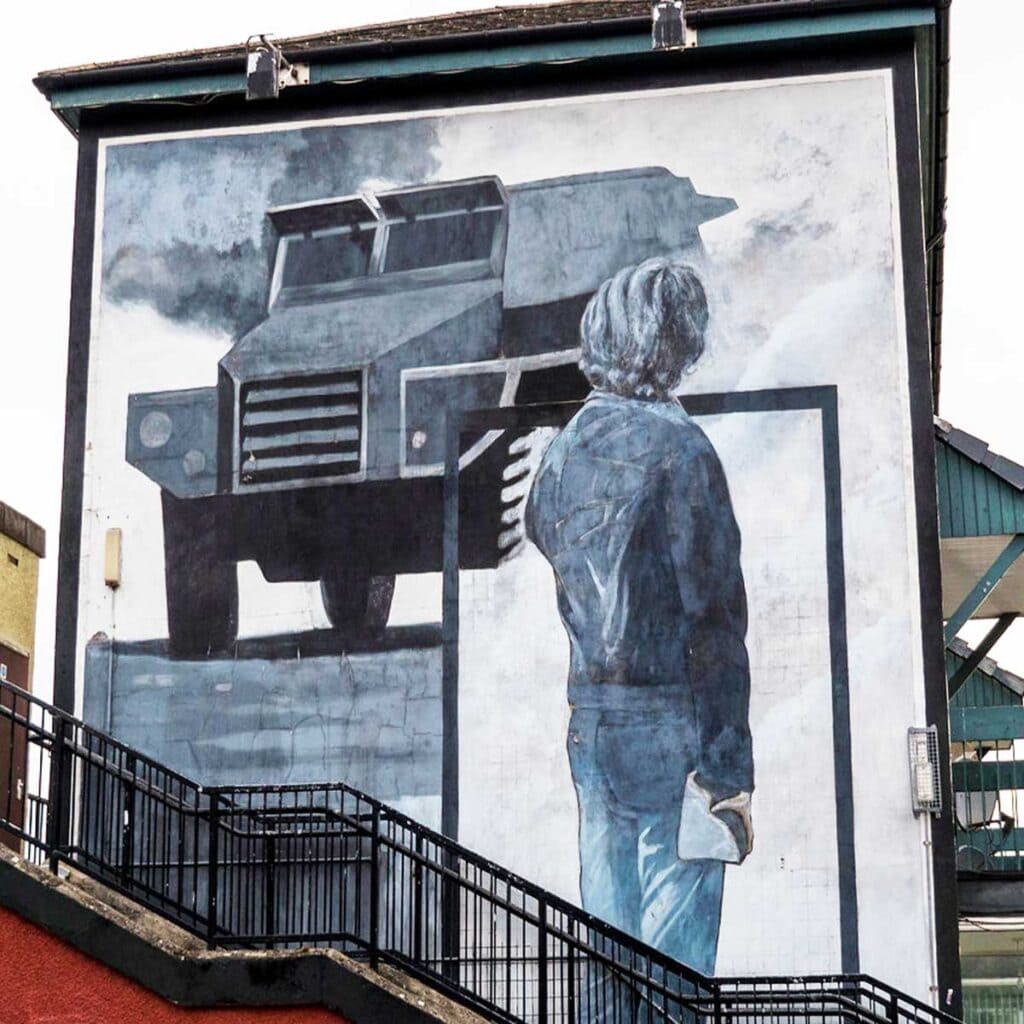
Civil Rights
Early marches were inspired by the campaigns of Martin Luther King and were peaceful demonstrations.
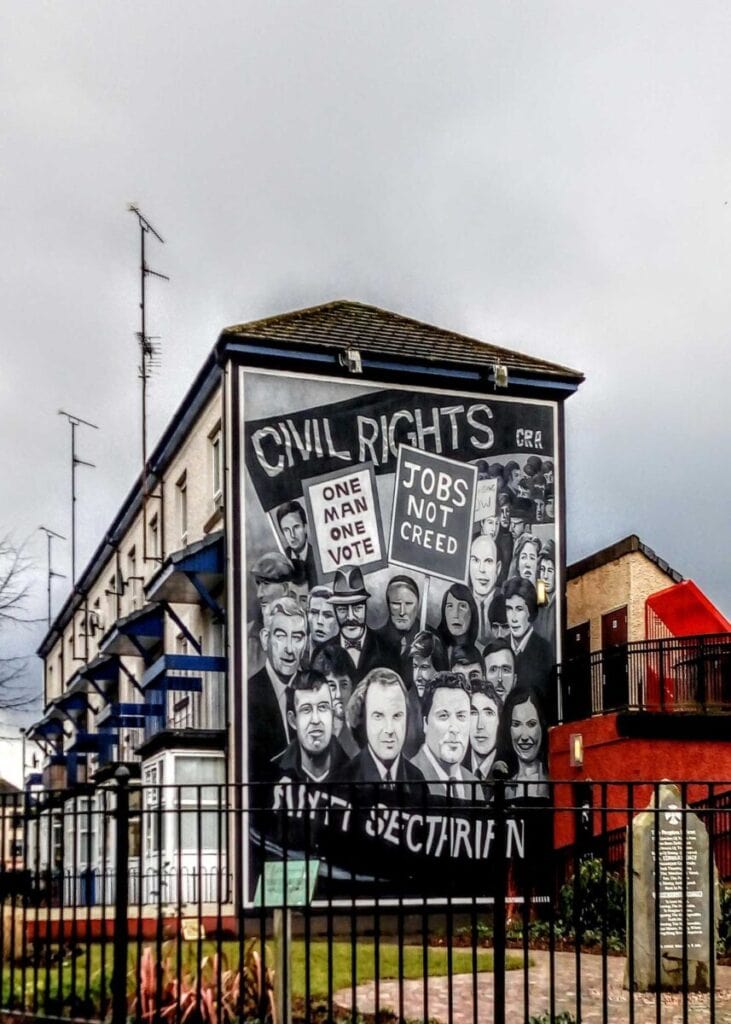
The Runner
A young boy running, after tear gas has been fired.
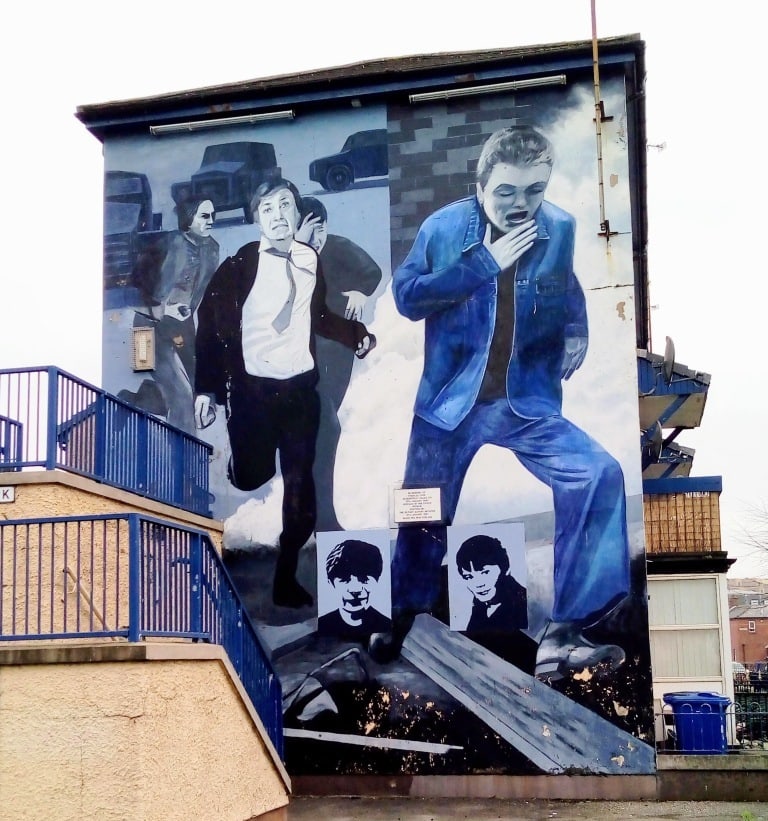
A Tribute to John Hume
Hume cited Martin Luther King as the person who influenced him most. Mother Teresa was involved in the quest for peace in the North. Mandela’s campaigns ran parallel with the campaign in the North. All 4 won the Nobel Peace Prize.
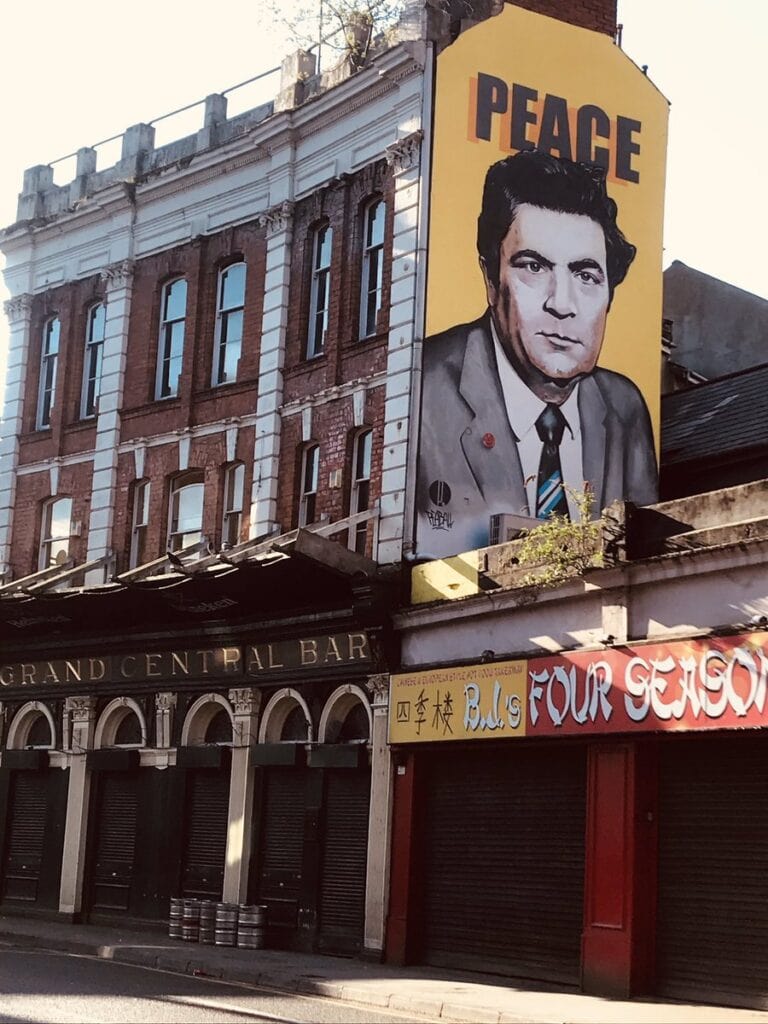
Hunger Strike Mural 2000
This mural was painted by ‘the Bogside Artists’ in 2000 and is based on the events of the Hunger Strike. It is situated on Rossville Street in the Bogside area of Derry.
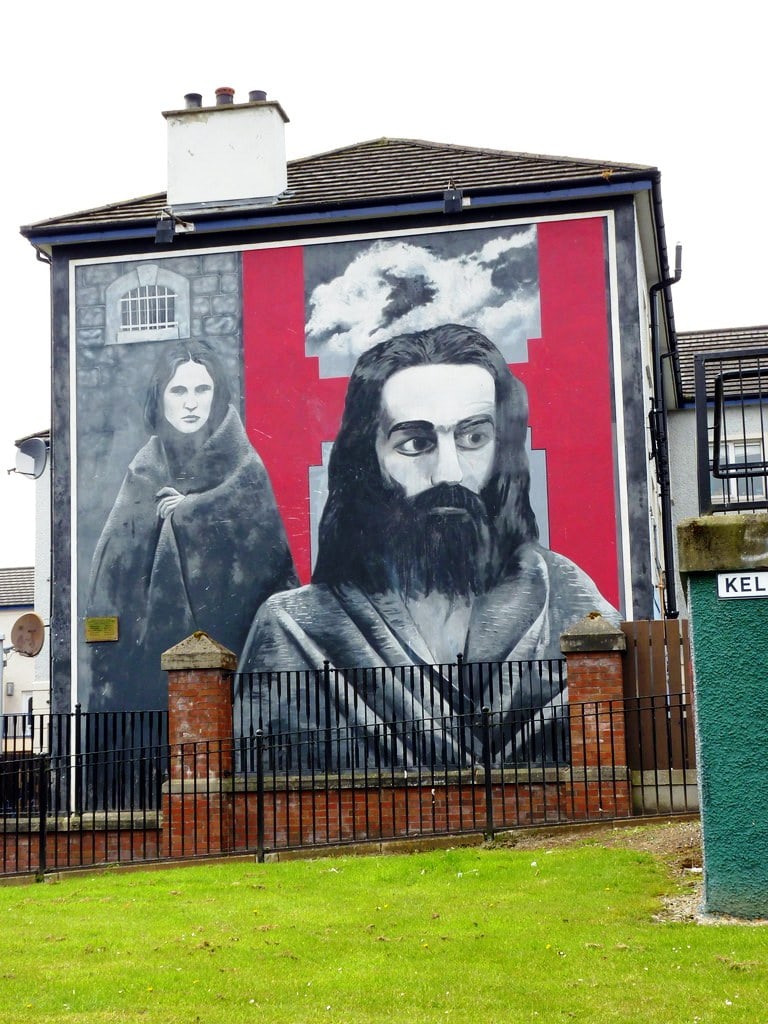
Street art in the Bogside
YOU ARE NOW ENTERING FREE DERRY
First painted by teenager John Caker Casey in 1969 on the gable end of terraced houses which have now gone. The name ‘Free Derry’ was given to those areas barricaded off from the security forces from 1969 -72. The barricades were removed during Operation Motorman. This street art is often added to with slogans relating to current events.
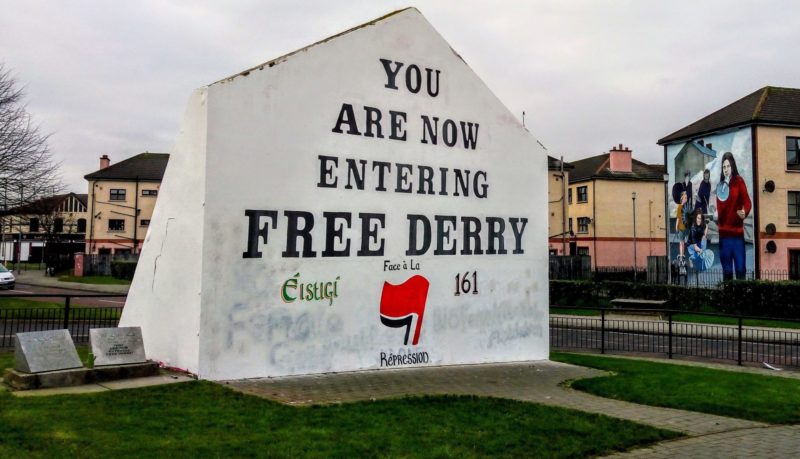
Bloody Sunday Memorial
A simple granite obelisk is surrounded by a small cast iron fence and a plaque that explains the Bloody Sunday massacre that took place here in 1972. Piles of flowers are left daily in remembrance of the event and the victims.

Museum of Free Derry
The Free Derry Museum concentrates on the Battle of Bogside, Bloody Sunday, and Operation Motorman which tells the story of the civil rights movement that began here. There are over 25,000 artefacts within the museum.
The Women of Derry
This mural is dedicated to the Women of Derry. Countess Markievicz, carrying a flag of Cumann na mBan, and Ethel Lynch, carrying a flag of the Derry IRA. Markievicz is famous for her role in the Easter Rising of 1916 Lynch died in December 1974 of injuries sustained when a bomb exploded prematurely.
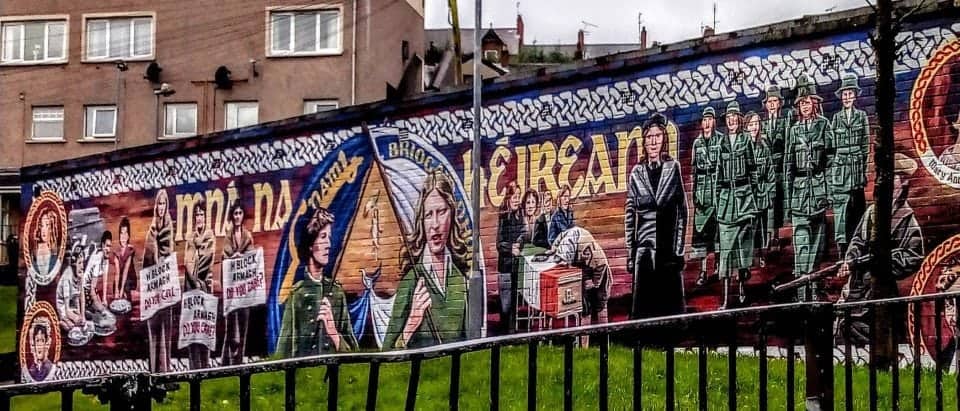
Hunger Strike Mural
One of the longest political wall murals in Ireland was unveiled in Derry in 2021 to commemorate the ten republican prisoners who died in the 1981 hunger strike in the H-Blocks at Long Kesh.
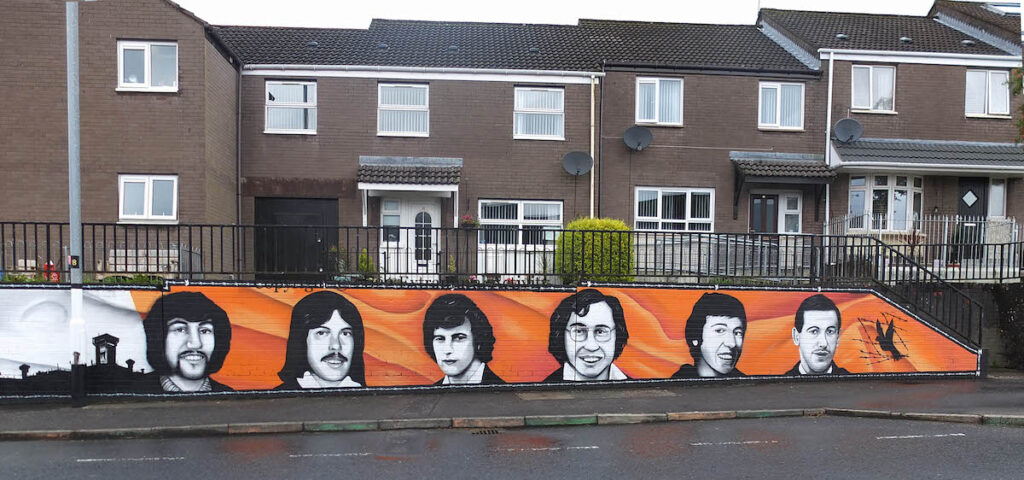
Hunger Strike Memorial
This monument commemorates those who died in the 1981 hunger strike.
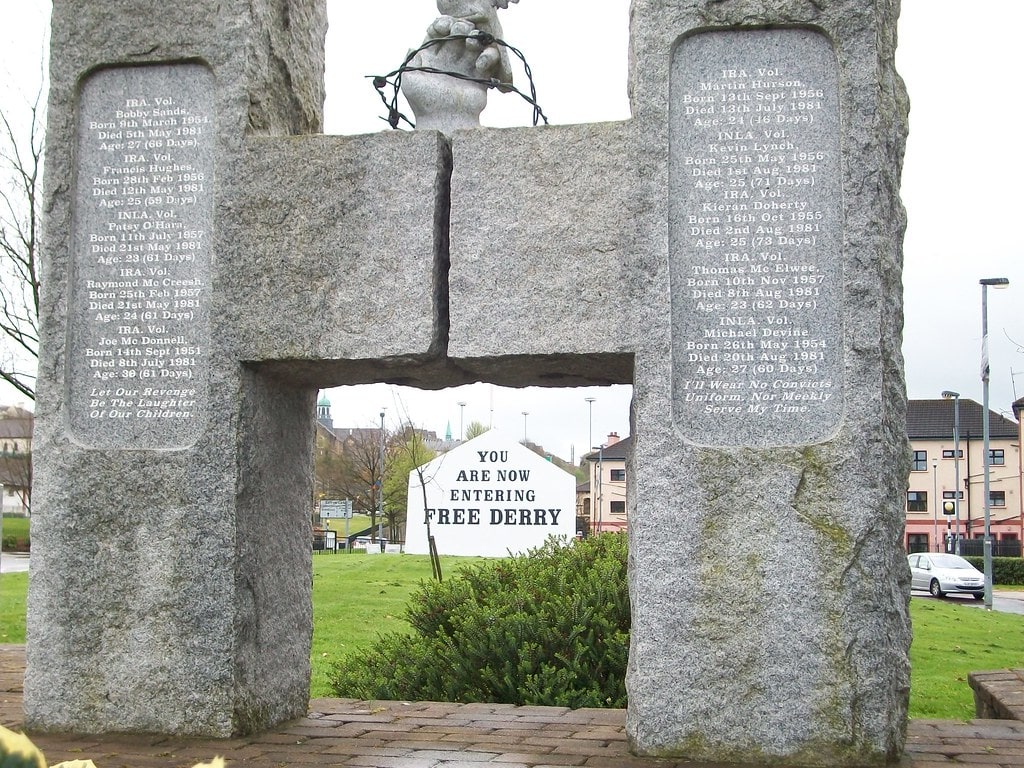
Women’s Voices Matter
This is a more recent mural of the Lower Shankill estate. It shows a patchwork quilt of words related to women and the roles they play in families and communities, such as “aunt”, “mother”, “sister”, “granny”, and “caring”, “diverse”, “strong”, and “unheard voices”.
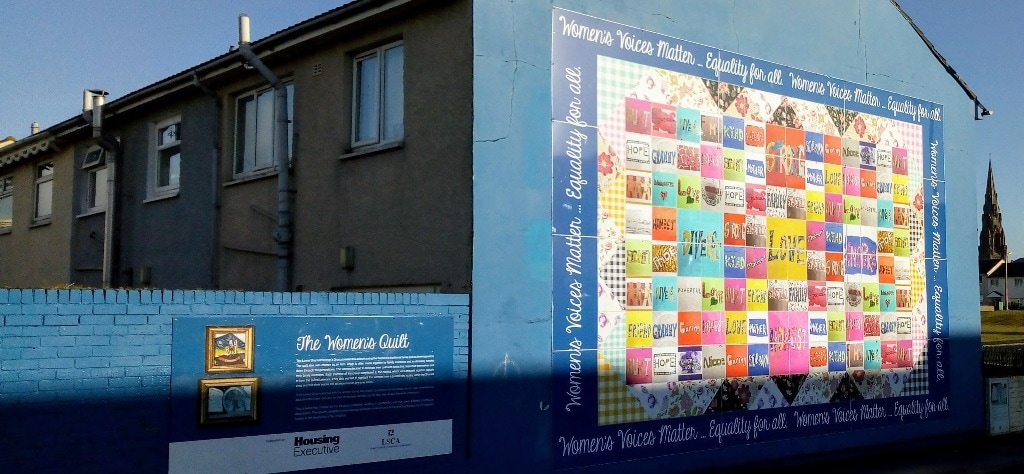
Che Guevara Mural
My personal favourite was, however, the Che Guevara mural. Apparently, Che’s father, whose full name is Ernesto Guevara Lynch, was proud of his Irish roots and how his family built a business in Argentina after fleeing Ireland during Cromwell’s era.
Years later when Che was Cuba’s transport minister, he made an unscheduled stop off in Limerick and wrote a letter to his father, who he thought would be pleased to hear that he was visiting a country of his ancestry.

Jim Fitzpatrick an Irish artist created the famous print of Che that appears around the world on t-shirts to posters. Jim was also the graphic designer for all of Thin Lizzy’s album covers. Recently Adrian told us that since Jim never received a penny for the Che graphic he has now copyrighted the graphics and created a fund that gives all the profits from the sale of the image back to Cuba.
The Bogside Murals of Derry are an important part of the city’s history. They serve as a reminder of the struggles and sacrifices made by the people of Northern Ireland, and how far they have come since then.
But not all the Derry murals are of The Troubles the newest mural is of The Derry Girls a TV show that is a true reflection of what it was like to live through the 90’s in Derry.

These murals provide a vivid visual representation of this tumultuous past, allowing visitors to gain an understanding and appreciation for what has transpired in this region. As time passes, these murals will continue to be a source of inspiration for generations to come.
Pin it to save it


